I take it all back(or at least most of it) what I said about Romanian roads yesterday. I’ve had a great day of travelling today. I don’t know what that appalling Bucharest ring road was all about. My suspicion is that lorries are banned from some of the best roads, and I may have been taking the HGV-only route. After a prompt start this morning I headed north towards Brasov in Transylvania on Highway 1,a perfect dual carriageway, via the industrial city of Ploesti. There were no lorries at all, anything above 7.5 tons banned.(There is a roughly parallel motorway where presumably they are allowed)My Airfix model-making days remind me that Ploesti was(and is ) the centre of the Romanian oilfields, valuable to The Axis powers in WW2 and finally within bombing range of the allies once the long-range Liberator bomber came into service. There were several oil refineries in view as I drove ,but the ring road skirted the city by a few miles.
The country north of Bucharest is a flat plain: the deja-vu feeling that I had yesterday about it resembling New Zealand continued this morning. Along the wide, straight highway, with the snow-clad Carpathians coming closer ahead ,in bright sun, the roadside towns were built as strips along the road, often turn-of-the-century (late 19th/early 20th)bungalows, with verandas,tin roofs, and more modern American style advertising hoardings along the highway.I felt as if I could have been on the Canterbury Plain of New Zealand.
The road was fast and straight for the first 100km of the journey then for the last 50km my speed slowed as I wound up into the Carpathian mountains. The highest point was the town of Predeal ,which is a ski resort,although the main ski resort of the region is Poiana Brasov, the other side of the mountain. I might as well have been in the Alps,for there were big hotels,all in alpine style.There was patchy snow on the ground and actually some snow on the roofs. Cliffs clad with pine forest and snow soared above. I wondered what sort of climate I was heading into, but this pass marks the border between the regions of Wallachia to the south of the Carpathians, and Transylvania to the north,and very shortly the road descended into Transylvania by a series of hairpins down to a big plain ,situated well below any snow, where the city of Brasov sits .
The country north of Bucharest is a flat plain: the deja-vu feeling that I had yesterday about it resembling New Zealand continued this morning. Along the wide, straight highway, with the snow-clad Carpathians coming closer ahead ,in bright sun, the roadside towns were built as strips along the road, often turn-of-the-century (late 19th/early 20th)bungalows, with verandas,tin roofs, and more modern American style advertising hoardings along the highway.I felt as if I could have been on the Canterbury Plain of New Zealand.
The road was fast and straight for the first 100km of the journey then for the last 50km my speed slowed as I wound up into the Carpathian mountains. The highest point was the town of Predeal ,which is a ski resort,although the main ski resort of the region is Poiana Brasov, the other side of the mountain. I might as well have been in the Alps,for there were big hotels,all in alpine style.There was patchy snow on the ground and actually some snow on the roofs. Cliffs clad with pine forest and snow soared above. I wondered what sort of climate I was heading into, but this pass marks the border between the regions of Wallachia to the south of the Carpathians, and Transylvania to the north,and very shortly the road descended into Transylvania by a series of hairpins down to a big plain ,situated well below any snow, where the city of Brasov sits .
Now for the history lesson. I love this bit, as it shows just what a complicated place Europe is.
With increasing threat from the Ottomans in the12th century,the King of Hungary encouraged Saxon settlers to come to what was then the eastern side of Hungary, to help defend it.They established a thriving German community which became the main occupiers of the area : it was called Siebenburgen(Seven Towns) and in fact is still called that by Germans(e.g. in my German campsite guide).Brasov was a Saxon trading borough run by city guilds:the German name was Kronstadt.The old town is very attractive -it has a large wide pedestrianised area,set out with cafes,a Germanic look to the buildings too. Brasov in the post-war communist era was briefly named Orusul Stalin,although that name didn’t stick.
The Saxon community was widespread,and in the villages there are unique fortified churches which I hope to visit, each little community needing defences against raiding Ottomans.Romania did very well out of WWI,joining the winning side and at the treaty of Trianon was awarded territory which doubled its area,including the taking of Transylvania from Hungary ,so the Saxon community became Romanians as opposed to Austro-Hungarians.
In WW2 the Romanians,like the Italians,joined the wrong side first then switched.I read that 600,000 Romanians were killed fighting the Russians on the Eastern front.As the Soviets were about to enter Romania,Romania suddenly switched sides.Thereafter 200,000 more died fighting with the Russians against their former allies,the Germans.At that point a large part of the Saxon community were evacuated or fled towards Germany,but a sizeable minority remained,and they were not evicted by the communists.However,after the fall of the Ceaucescu regime in the revolution of 1989,life was made difficult for them,and most of the remainder left.I didn’t know that Germany still retains a policy of re-naturalising any ethic Germans(Auslandsdeutsche), and most were welcomed back to Germany after 800 years, though some went to the USA.
After a walk around Brasov,I headed southwest 20km,first to the small town of Rasnov which has an imposing castle overlooking it,originally Roman,then a fortress for the Teutonic knights,finally a fortified town of Saxons.Despite its impressive look from below,it is now mostly a ruin and the best thing up on top is the view.In fact several scenes from "Cold Mountain" (Nicole Kidman/Jude Law,Renee Zellweger)were filmed around here.The Romanians are having a good go at touristising it,with the castle walls full of souvenir shops, and a Dinosaur park on the slopes below about to open.
With increasing threat from the Ottomans in the12th century,the King of Hungary encouraged Saxon settlers to come to what was then the eastern side of Hungary, to help defend it.They established a thriving German community which became the main occupiers of the area : it was called Siebenburgen(Seven Towns) and in fact is still called that by Germans(e.g. in my German campsite guide).Brasov was a Saxon trading borough run by city guilds:the German name was Kronstadt.The old town is very attractive -it has a large wide pedestrianised area,set out with cafes,a Germanic look to the buildings too. Brasov in the post-war communist era was briefly named Orusul Stalin,although that name didn’t stick.
The Saxon community was widespread,and in the villages there are unique fortified churches which I hope to visit, each little community needing defences against raiding Ottomans.Romania did very well out of WWI,joining the winning side and at the treaty of Trianon was awarded territory which doubled its area,including the taking of Transylvania from Hungary ,so the Saxon community became Romanians as opposed to Austro-Hungarians.
In WW2 the Romanians,like the Italians,joined the wrong side first then switched.I read that 600,000 Romanians were killed fighting the Russians on the Eastern front.As the Soviets were about to enter Romania,Romania suddenly switched sides.Thereafter 200,000 more died fighting with the Russians against their former allies,the Germans.At that point a large part of the Saxon community were evacuated or fled towards Germany,but a sizeable minority remained,and they were not evicted by the communists.However,after the fall of the Ceaucescu regime in the revolution of 1989,life was made difficult for them,and most of the remainder left.I didn’t know that Germany still retains a policy of re-naturalising any ethic Germans(Auslandsdeutsche), and most were welcomed back to Germany after 800 years, though some went to the USA.
After a walk around Brasov,I headed southwest 20km,first to the small town of Rasnov which has an imposing castle overlooking it,originally Roman,then a fortress for the Teutonic knights,finally a fortified town of Saxons.Despite its impressive look from below,it is now mostly a ruin and the best thing up on top is the view.In fact several scenes from "Cold Mountain" (Nicole Kidman/Jude Law,Renee Zellweger)were filmed around here.The Romanians are having a good go at touristising it,with the castle walls full of souvenir shops, and a Dinosaur park on the slopes below about to open.
Next stop was 10km down the road, at Bran castle.This is very much an established tourist site and Bran village(German 'Torzburg') tries to ride on the Dracula myth,although the truth was very different. So far as I can see the only connection to Dracula is that Bran castle most fits the description of the imaginary Count Dracula's castle in Bram Stokers' original novel . The historical figure of Vlad the Impaler actually has little ,or no ,connection with this castle. This does not stop the avenue of tourist stalls outside the castle gate trying to sell masses of tacky Dracula souvenirs. The real history is that the castle was originally another Teutonic knights base, and eventually became the home of Queen Maria of Romania, gifted to her by the state in recognition for her help in unifying Romania after WW1.Her daughter Princess Ileana was evicted during the communist regime,but in 2006 it was returned by the state to her children,including Dominic Habsburg,and they have since opened it as a museum. It is quite small but spectacularly turreted, and the design owes much to the Lego school of medieval castles.The rooms are small,and must have been cosy,and quaint little staircases and walkways wind in all directions.
In the village was my base for the night ,“Vampire Camping”, a nice field with the snow clad mountain towering behind. I ate at a pleasant little Italian restaurant just up the road from the campsite.
In the village was my base for the night ,“Vampire Camping”, a nice field with the snow clad mountain towering behind. I ate at a pleasant little Italian restaurant just up the road from the campsite.
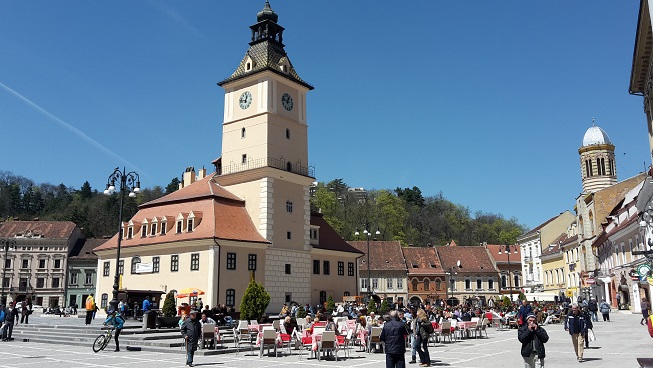
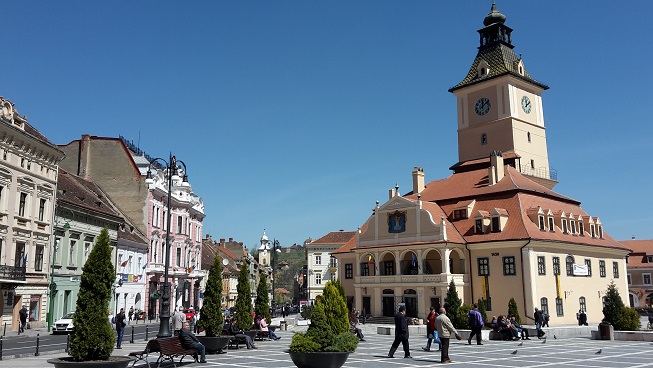
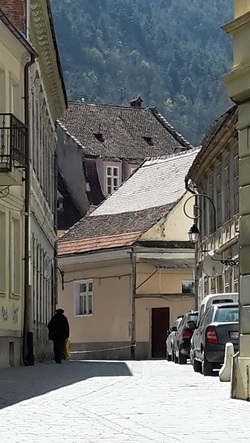
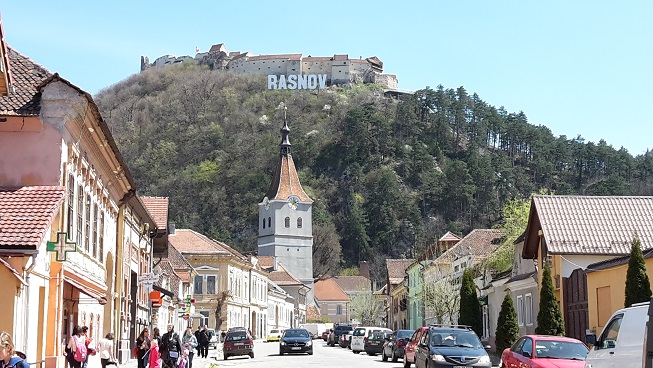
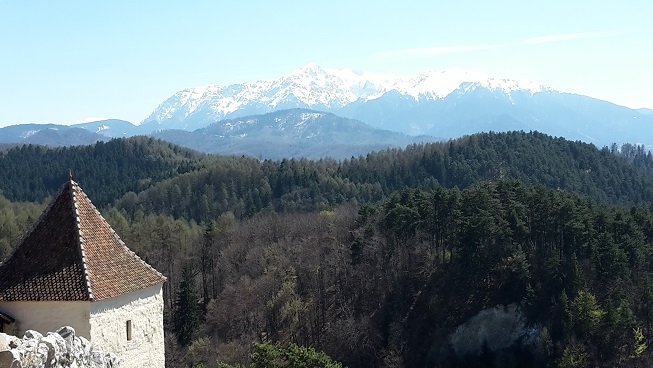
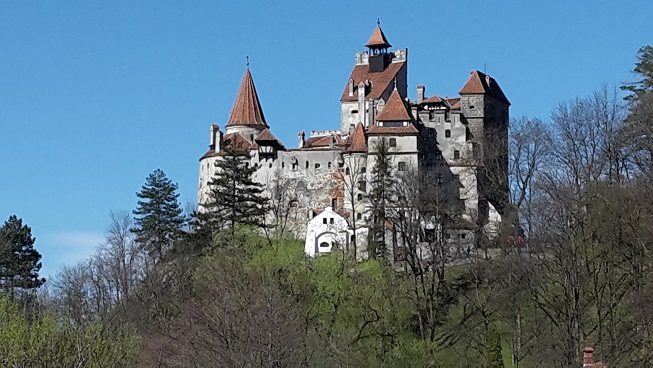
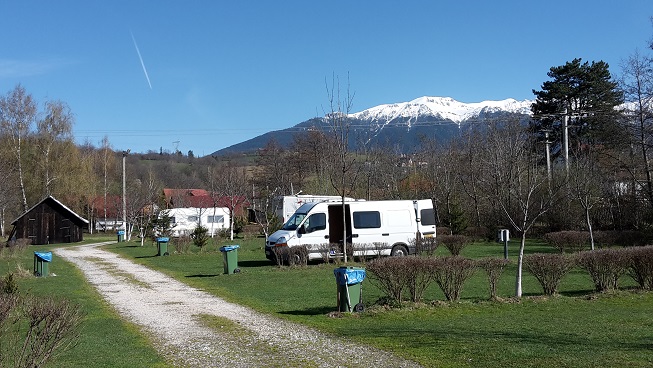
 RSS Feed
RSS Feed